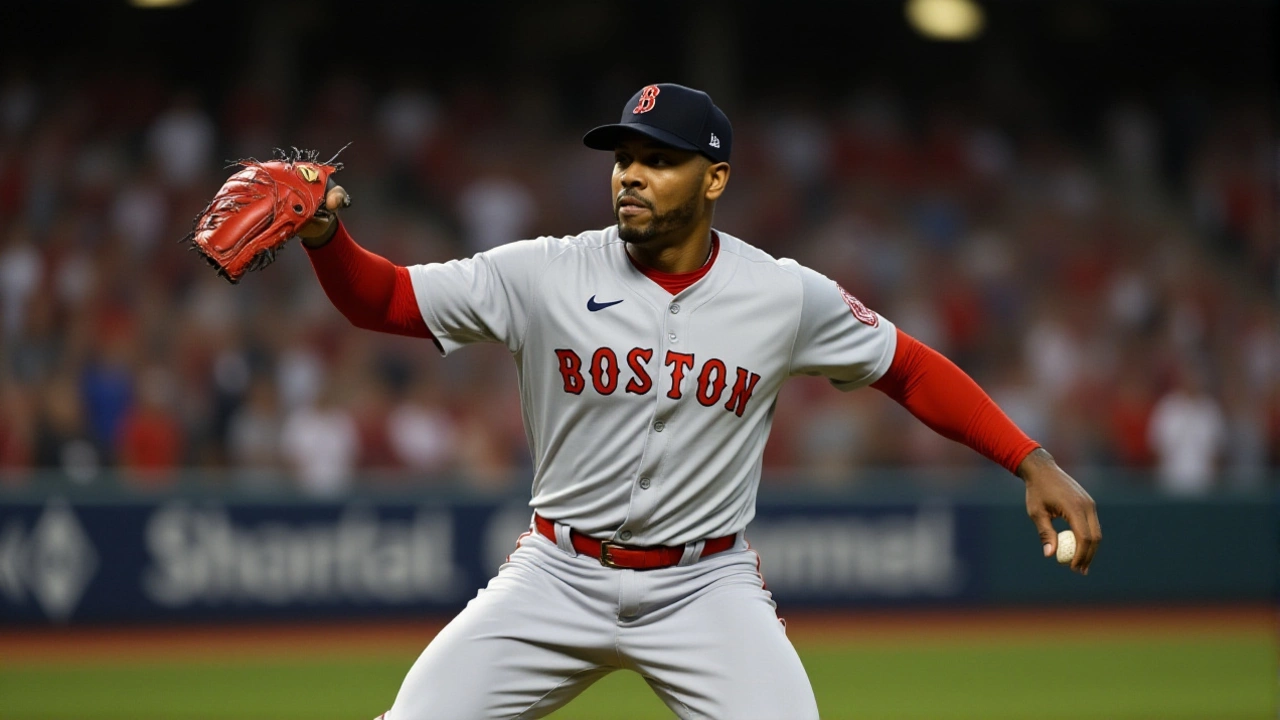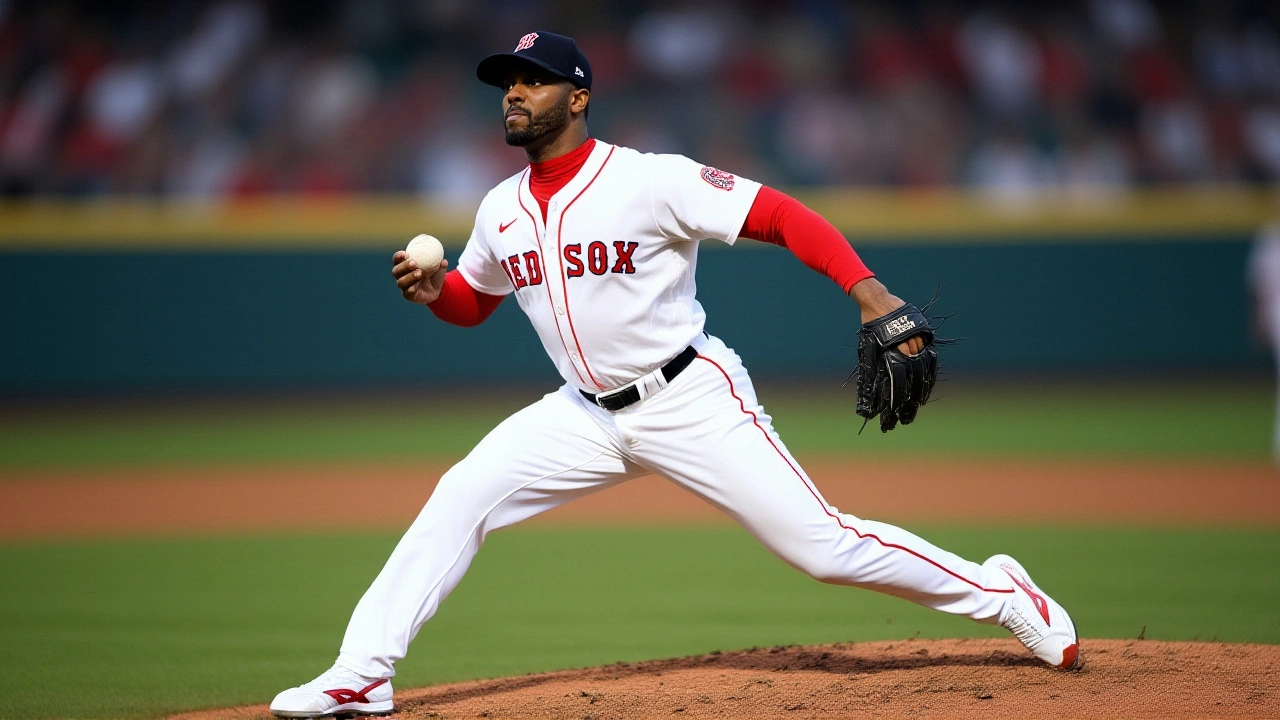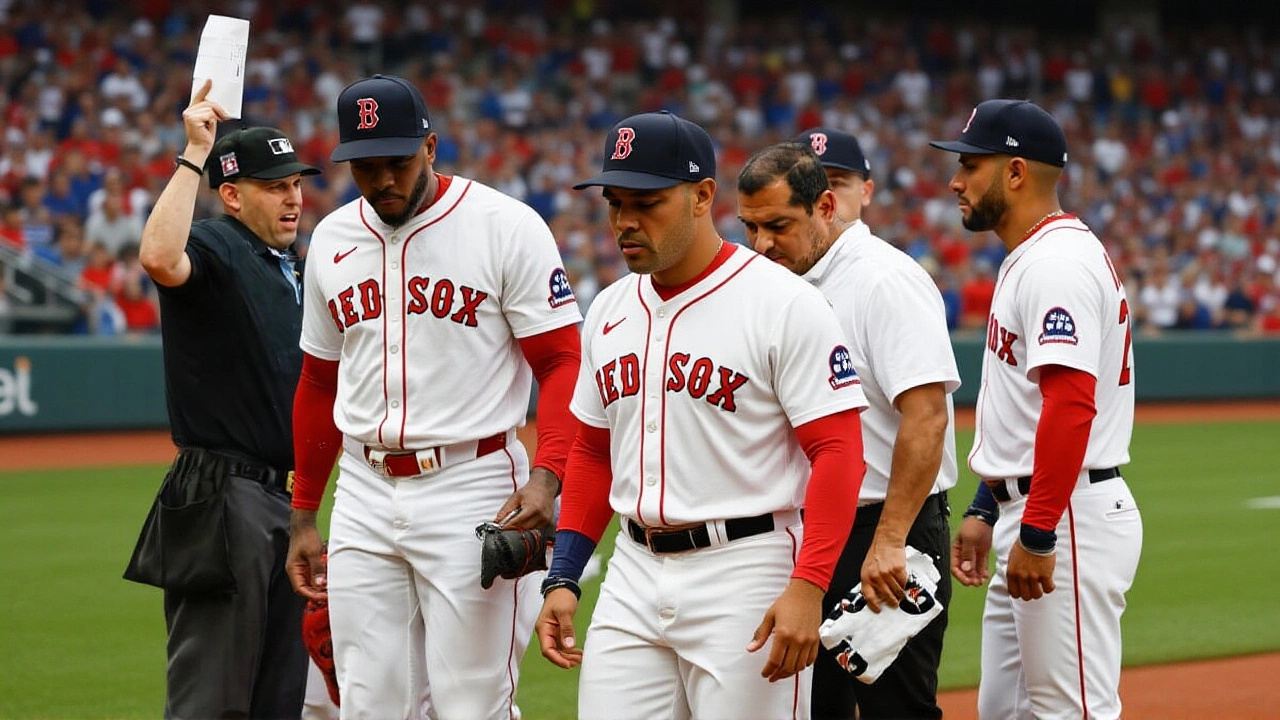
When Aroldis Chapman, the veteran left‑handed closer of Boston Red Sox, agreed to a new contract, the Fenway faithful felt a wave of relief.
The deal, reported by a source to MLB.com on July 31, 2024, locks Chapman in for the 2026 season with a $13 million base salary and a vesting‑mutual option for 2027. While the club has yet to issue an official press release, the terms are already sparking conversation across the league.
Background: Chapman’s Journey to Boston
Born in Guantánamo, Cuba, Aroldis Chapman burst onto the major‑league scene in 2010 with the Cincinnati Reds, quickly earning the nickname “The Cuban Missile.” Over 16 seasons he has amassed 361 career saves, ranking 13th all‑time, and has logged more than 700 innings with an average fastball velocity hovering around 100 mph.
After stints with the New York Yankees, Chicago Cubs and Atlanta Braves, Chapman signed a one‑year deal with Boston in December 2023. The Red Sox saw his veteran poise and overpowering stuff as the missing piece for a bullpen that had struggled to close out games in the 2023 season.
2025 Season: A Career Year in Boston
Fast forward to the current campaign, and Chapman is having what many call a “career renaissance.” In 57 appearances he has recorded 26 saves, fanned 74 batters, and allowed just one home run across 52 innings. That translates to a strikeout‑per‑nine (K/9) rate of 12.8 – a figure usually reserved for pitchers a decade younger.
His performance earned him an eighth All‑Star selection, the first of his career to come while wearing a Red Sox uniform. "He’s still got that fireball,” said longtime baseball analyst John Gonzalez on the ESPN broadcast. "What’s remarkable is his consistency. He’s not just a one‑off flicker; he’s delivering elite numbers night after night.”
The Extension Deal: Numbers and Structure
The agreement is built around a base salary of $13 million for 2026, but the real intrigue lies in the performance incentives. If Chapman pitches at least 40 innings during the 2025 season – a threshold he is already on track to surpass – the contract guarantees a total of $26 million over the two‑year span.
- 2026 base salary: $13,000,000
- Vesting option for 2027: player‑team mutual decision
- Performance clause: 40‑inning trigger in 2025 adds $13.3 million to 2026 total
- Additional incentives tied to saves, ERA below 2.00, and strikeout totals
"We wanted a deal that reflects his value but also gives us flexibility," explained David Quinn, the Red Sox’s senior vice president of baseball operations. "At 37, Aroldis still throws like a 27‑year‑old. This contract rewards that performance while protecting both sides should anything change.”

Reactions from Boston and the League
Boston manager Alex Cora was quick to praise the move: "We’re thrilled to keep Aroldis in the clubhouse. His work ethic and competitive fire set a tone for the whole pitching staff. Knowing we have him for the next couple of years lets us build our bullpen with confidence."
Opposing managers expressed a mix of admiration and caution. New York Yankees skipper Aaron Boone noted, "Chapman’s stuff is still elite. If he stays healthy, he’s a nightmare for any late‑inning situation. The Red Sox just made the bullpen a lot harder to beat."
What This Means for the Red Sox Bullpen
Boston entered the 2025 season with a bullpen that ranked 21st in the American League for saves. Chapman's dominance has already shifted that metric dramatically – the team sits in the top five for save opportunities converted.
Beyond the raw numbers, his veteran presence mentors younger arms like Fernando Valenzuela Jr. (not the Hall‑of‑Famer, but a promising reliever) and Nick Pivetta, who transitioned to a setup role earlier this year. "Having a closer who still throws 100 mph gives the whole staff a confidence boost," said Pivetta in a post‑game interview.
Looking Ahead to 2026 and Beyond
If Chapman meets the 40‑inning benchmark, Boston will face the 2026 season with a locked‑in closer and a clear path for the next window of contention. The vesting‑mutual option for 2027 adds a layer of strategic flexibility – the team can assess his health and performance at age 38 before committing further.
Analysts argue that retaining him also sends a market signal. "Other clubs watching this will see Boston’s willingness to invest in proven talent, not just youthful upside," said Gonzalez. "It could influence free‑agent negotiations across the league this offseason."

Frequently Asked Questions
How does the extension affect the Red Sox’s salary‑budget flexibility?
The contract’s structure spreads the financial commitment over two years, with a $13 million base in 2026 and incentives tied to 2025 performance. Because the option for 2027 is mutual, Boston retains the ability to reassess payroll allocation after the 2026 season, preserving flexibility for free‑agent pursuits.
What does the 40‑inning trigger mean for Chapman’s workload?
Chapman must pitch at least 40 innings in 2025 to activate the extra $13.3 million compensation for 2026. At his current pace—52 innings through 57 games—he’s already surpassed that mark, indicating the team is comfortable relying on him heavily in high‑leverage situations.
Will Chapman’s age limit his effectiveness moving forward?
While 37 is advanced for a closer, Chapman’s velocity remains in the high‑90s, and his 2025 strikeout rate suggests he can still dominate hitters. The contract’s incentive‑based design cushions Boston against any abrupt decline, giving them an exit point if performance wanes.
How might this deal influence other teams’ approaches to veteran relievers?
Boston’s willingness to pay a premium for a proven closer could prompt rivals to explore similar extensions rather than chase younger, untested arms. It underscores a market trend where teams value reliability in the late innings, especially in tight playoff races.
What are the chances the mutual option for 2027 will be exercised?
If Chapman stays healthy and continues to post sub‑2.00 ERA numbers, Boston is likely to keep him. However, if injuries arise or his velocity drops, the mutual clause gives both parties a clean exit without long‑term financial risk.
